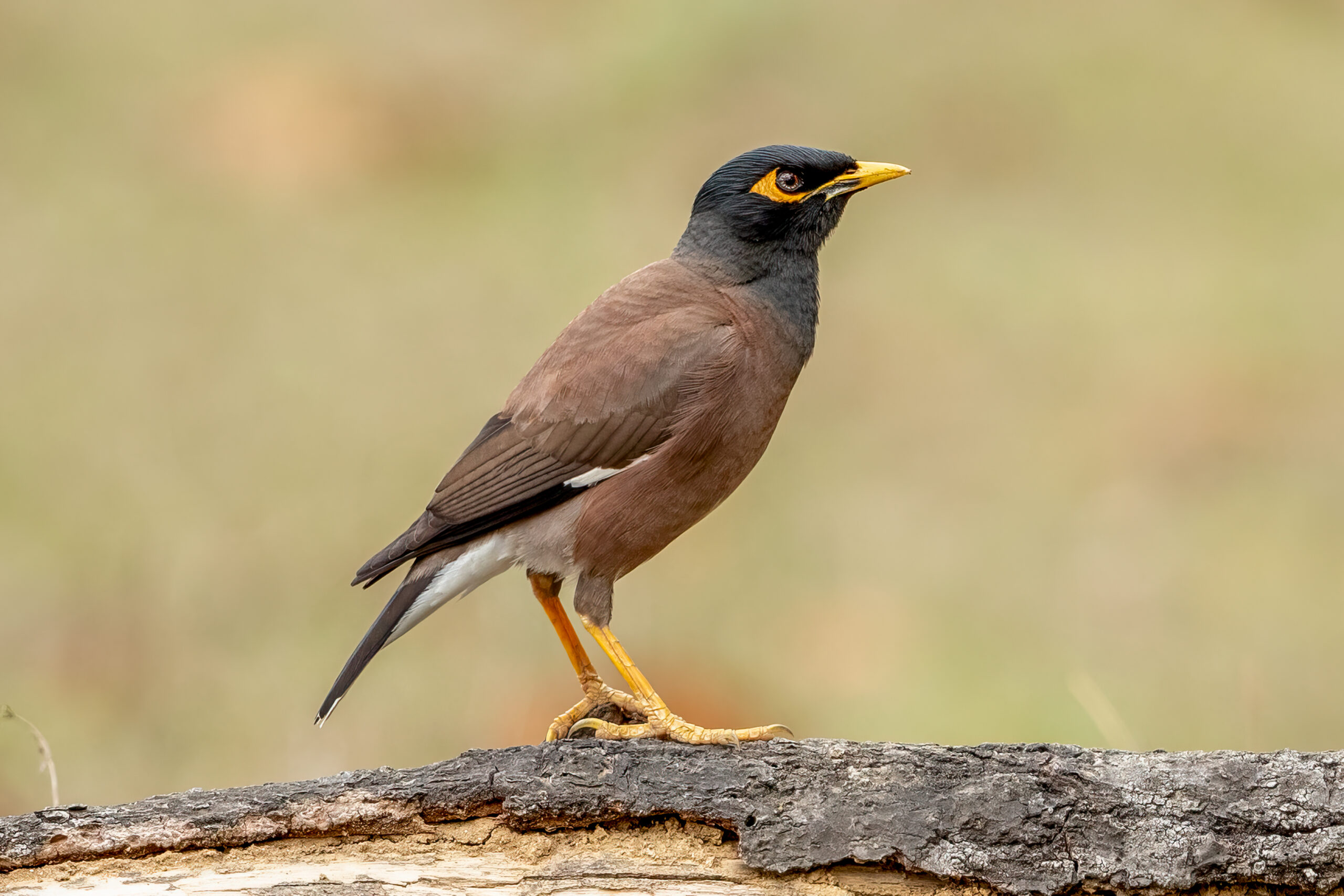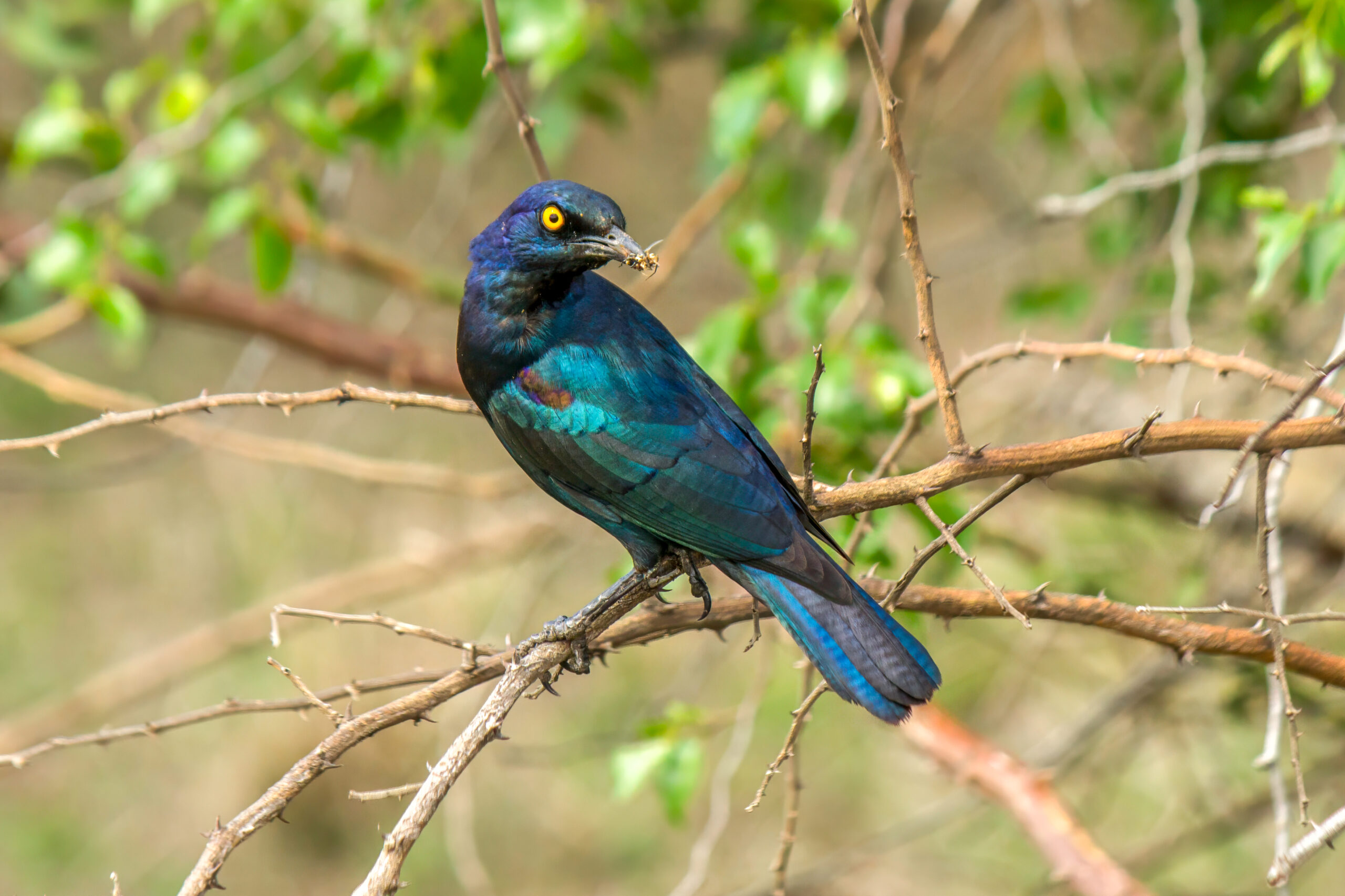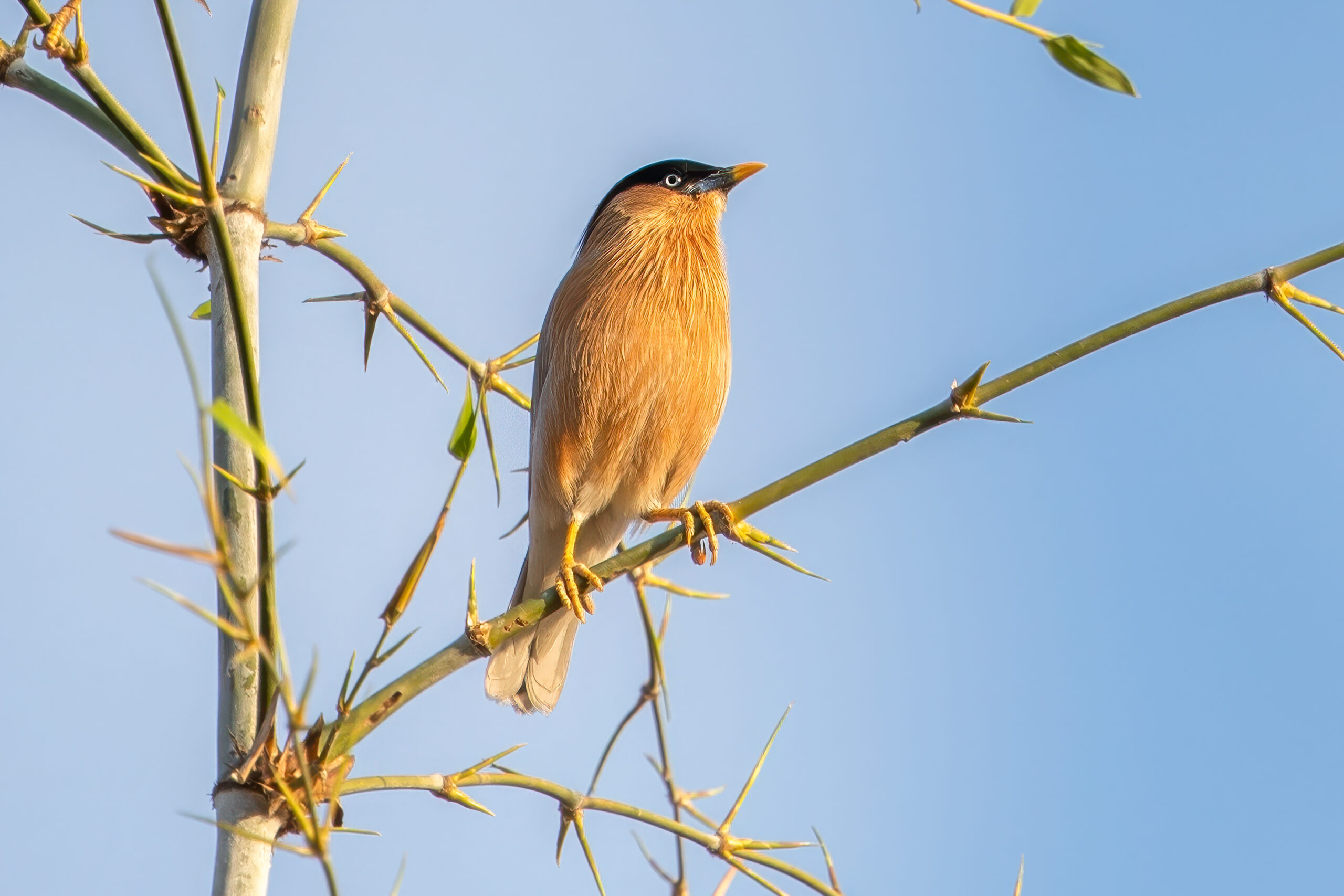Red-winged Starling
(Onychognathus morio)
Description
The red-winged starling (Onychognathus morio) is a fairly large starling commonly found across the eastern side of sub-Saharan Africa. It is known for its glossy black plumage and distinct red wing patches, which are most prominent during flight. The species exhibits sexual dimorphism, with males displaying glossy plumage all over, whereas the females have a grey non-glossy head and neck. An adult red-winged starling typically measures between 27 to 30 centimeters (10.6-11.8 inches) in length. Within its range, the red wing patches and larger size makes them easy to tell apart from most other starlings.
Diet & habitat
Their preferred habitats are rocky outcrops and cliffs in savannas and open woodland regions. However, due to their adaptable nature, they have successfully colonized urban areas, often seen nesting on buildings and other structures. Red-winged starlings are omnivorous, feeding on a variety of fruits, nectar, insects, and small vertebrates. In urban areas, they’re known to scavenge for human food waste. Their foraging behavior is adaptable, ranging from plucking fruits from trees to catching insects in mid-air. They are known for their bold and gregarious nature, often seen in groups, especially in urban areas.
Nesting
The breeding season for red-winged starlings typically occurs from September to December, aligning with the rainy season. They are monogamous birds, with pairs often remaining together for multiple breeding seasons. The female lays 2 to 4 eggs in a nest constructed on cliff ledges or building crevices. The incubation period lasts about 13 to 14 days, with both parents sharing incubation and chick-rearing duties. Fledglings leave the nest after approximately 23 days but remain dependent on their parents for a few more weeks.
Status
The population of red-winged starling is stable, and possibly increasing due to urbanization. It is widespread across its range. However, its adaptability to urban environments has led to conflicts with humans, as it can become aggressive during the breeding season. It is listed as least concern on the IUCN Red List.







